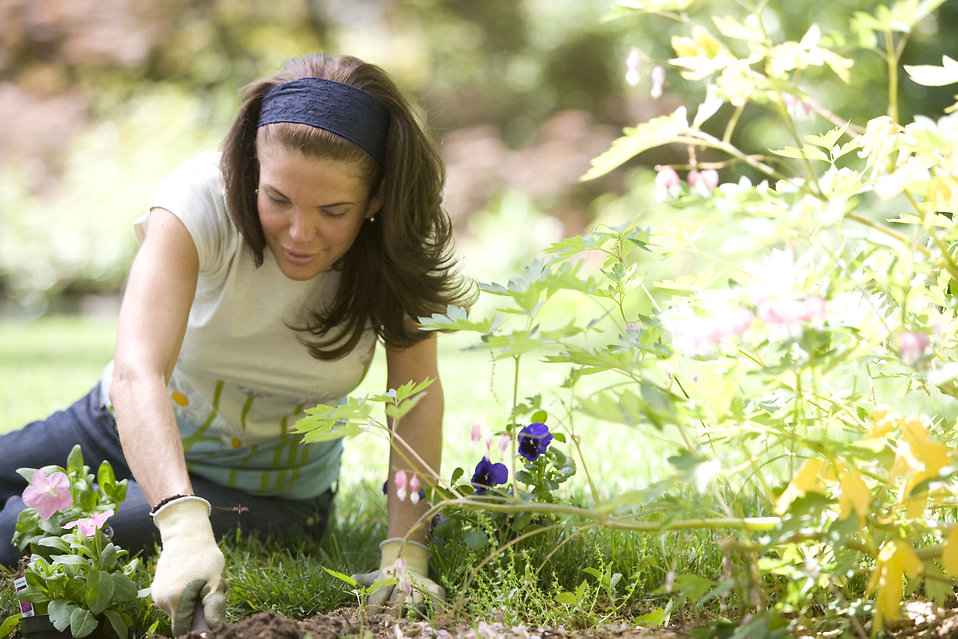Before gardening: know the soil, exposure and sunshine
The first thing is to know the quality of the ground and
analyze the soil. You can choose plants that will grow easily in that soil,
rather than trying to adapt plants to a soil that does not suit them. The
growth of the plants will also depend on the soil moisture.
Similarly, it is essential to know the exposure and
sunshine of the garden, to plant where the growing conditions are most favourable to them. It is also necessary to work the soil, once a year by
ploughing (or digging) and regularly by hoeing, so that the soil is loose and
aerated, conducive to plant development.

Gardening: where, when, how to plant and sow?
After all these prerequisites, it is finally time to sow
and plant! But where to plant? Balcony, terrace or outdoors, you have a wide
choice! Sowing cannot be improvised: you should know how to choose the seeds to
sow and how to do the right things to plant. For example, sow on the spot, in a
nursery or buckets, and then transplant. Besides, all these operations must be
carried out in the right season. Planting refers to the cultivation of plants,
for example, purchased in buckets or containers. The care taken during planting
(hole digging and abundant watering) is essential for the proper growth of the
new plant.
Weeding your garden

In the garden, there are plants that you want to grow,
but weeds settle spontaneously. Weeds take advantage of the water, light and
nutrients in the soil at the expense of the plants they want to grow.
You can eliminate them by manual weeding and weeding
(which consists of scraping the soil with a suitable instrument) or other
biological methods. It can be either thermal weeding which includes destroying
weeds by causing a fatal thermal shock; or chemical weeding, in which
herbicides from the chemical industry are used. The most commonly used is
glyphosate. You can prevent the return of weeds; a useful technique is to mulch.
Gardening and multiplying plants

One of the gardener’s concerns is to multiply the plants
in his garden to obtain new ones at a low cost. Perennials multiply most easily
in the world by a simple division. Another propagation technique is cuttings,
which consists in reproducing a new plant species foot from a piece of it.
Marcotting can be considered as a variant of cuttings. Finally, grafting is
another possible reproduction method, which mainly concerns fruit trees.
Maintaining plants
Plants need regular care, including pruning, and also
preventive or curative treatment against pests and diseases, especially fungal
infections.
Choose your plants
Before choosing your plants, you must take into account
several elements. Not all plants can tolerate the same temperatures; you must
choose your plants according to the climate zone where you live. Some plants
are more fragile than others, check their hardiness before installing plants in
the cold. Foliage and vegetation are also criteria not to be neglected.
Finally, the shape of the tree is decisive for the appearance of your garden.
The different forms of growth
Not all plants are equal in terms of development; some
may live for several decades, or even go through several generations like the oak. Others will only live for one or two years, as is the case with annual or
biennial plants.
As a result, some plants grow slowly, normally or rapidly.
For example, for shrubs or trees:
– Slow growth is less than 20 to 30 cm per year;
– normal growth is more than 30 to 60 cm per year;
– rapid growth is more than 60 cm per year.
As for perennials:
– slow growth is 4 to 5 years;
– the average growth is about 3 years;
– the rapid growth is 2 years;
with a life expectancy that ranges from 10 to 60 years of
longevity depending on the variety.
Slow
The plant (tree) reaches maturity in several decades. It,
therefore, has a low development rate, as is the case with some plants such as
the evergreen olive tree, which has extraordinary longevity and can live for
centuries.
Normal
The plant reaches maturity in a few years. However,
growth can be average (standard), or average and then slow, or even average to
fast. It is the case with cherries, which grow medium to fast depending on the
variety – their longevity is 50 to 100 years.
Fast
The plant reaches maturity within a few months.
The plant often grows in unstable environments and
therefore occupies space quickly to better capture light. Trees or shrubs are
generally enormous. Some persistent plants grow rapidly in bright light and
prefer cold soils, but some of them are also resistant to dry and poor land.
Use a gardener or gardening service
If you want help with your gardening work, you can
recruit a gardener yourself directly and pay him; in this case, you become a private individual employer. Alternatively, you can use a gardening service
provided by a service company.

